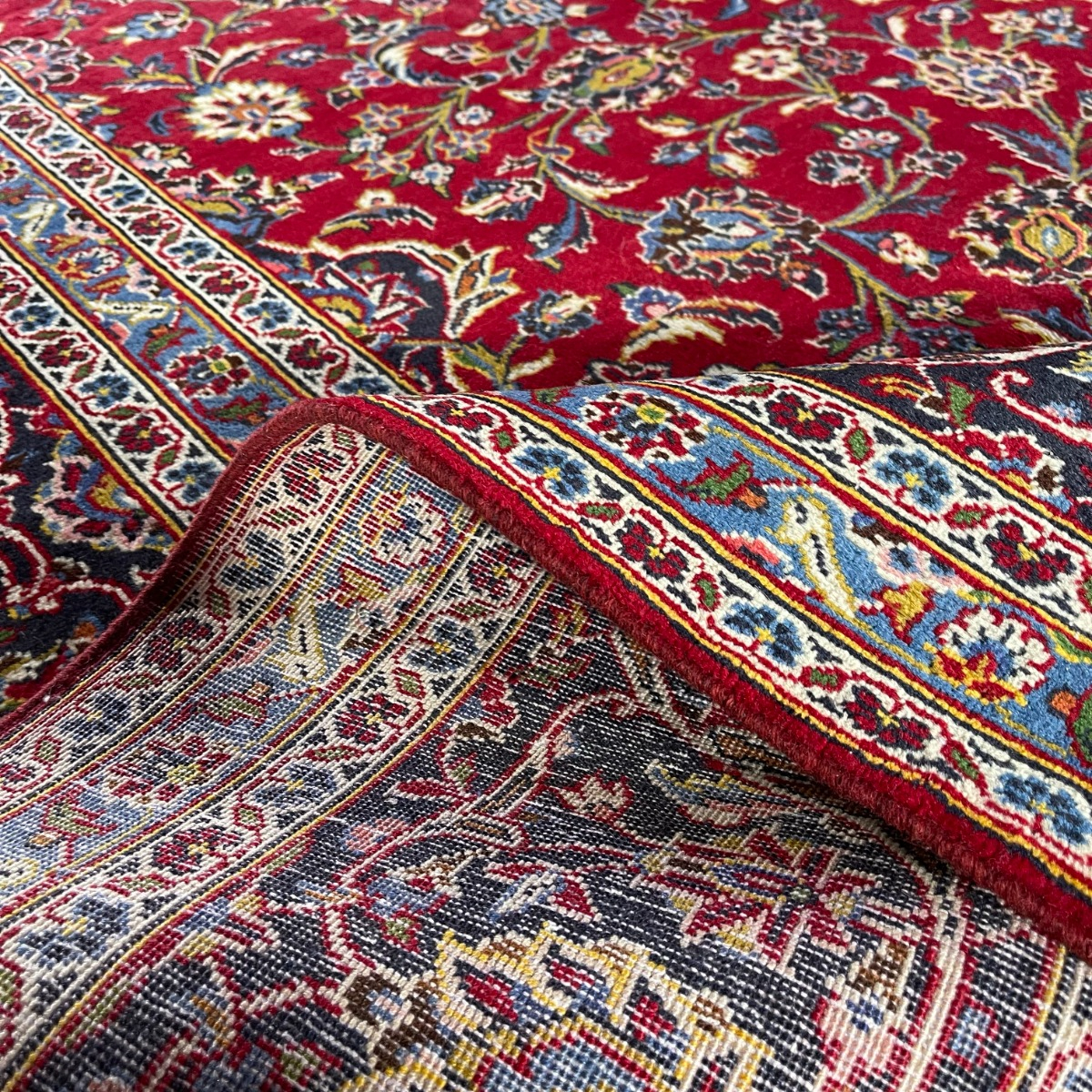Kashan Rugs vs. Mashad Rugs: Exploring History, Origins, and Aesthetics
- Home
- Tabrizi Rugs Blog
- Kashan Rugs vs. Mashad Rugs: Exploring History, Origins, and Aesthetics

Kashan Rugs vs. Mashad Rugs: Exploring History, Origins, and Aesthetics
When it comes to Persian rugs, the names Kashan and Mashad evoke images of luxurious hand-woven masterpieces, each with its own distinct charm and history. In this exploration, we delve into the origins, histories, and unique characteristics of Kashan and Mashad rugs, shedding light on what sets them apart in the realm of Persian rug craftsmanship.
Kashan Rugs: A Tale of Elegance and Tradition
Originating from the city of Kashan in central Iran, Kashan rugs boast a rich history that dates back centuries. Renowned for their intricate designs, fine craftsmanship, and exquisite materials, Kashan rugs have long been celebrated as some of the finest examples of Persian rug artistry.
The history of Kashan rugs can be traced back to the Safavid dynasty (16th to 18th centuries), a period known for its flourishing arts and culture. It was during this time that Kashan emerged as a prominent center for rug weaving, with skilled artisans creating pieces fit for royalty and nobility.
One of the defining features of Kashan rugs is their intricate floral and arabesque motifs, often rendered in rich, jewel-toned colors such as deep reds, blues, and greens. These designs are meticulously hand-knotted onto a cotton or silk foundation, resulting in a rug that is not only visually stunning but also incredibly durable.
Mashad Rugs: The Grandeur of Persia's Northeast
In contrast to Kashan rugs, Mashad rugs hail from the northeastern region of Iran, particularly the city of Mashad, which is famous for its religious significance as the burial place of Imam Reza, the eighth Shia Imam. This cultural backdrop infuses Mashad rugs with a sense of reverence and grandeur, reflected in their majestic designs and meticulous craftsmanship.
The history of rug weaving in Mashad dates back centuries, with artisans drawing inspiration from the region's diverse cultural influences, including Persian, Turkmen, and Afghan traditions. As a result, Mashad rugs are characterized by their bold geometric patterns, intricate medallions, and vibrant color palettes, often featuring hues of red, blue, and ivory.
What sets Mashad rugs apart is their use of high-quality wool sourced from the region's sheep, known for its softness, resilience, and natural luster. This, combined with the skilled hand-knotting techniques passed down through generations, results in rugs that are not only visually striking but also incredibly plush and comfortable underfoot.
Comparing Kashan and Mashad Rugs
While both Kashan and Mashad rugs share a reverence for tradition and an unwavering commitment to craftsmanship, there are distinct differences that set them apart.
- Design Aesthetics: Kashan rugs tend to feature intricate floral and arabesque motifs, whereas Mashad rugs often showcase bold geometric patterns and medallions.
- Materials: Kashan rugs are typically made from a combination of silk and cotton, resulting in a luxurious sheen and durability, while Mashad rugs predominantly use high-quality wool for a plush, comfortable feel.
- Color Palette: Kashan rugs favor rich, jewel-toned colors, while Mashad rugs often incorporate vibrant hues of red, blue, and ivory.
- Cultural Influences: Kashan rugs draw inspiration from the central Persian tradition, while Mashad rugs reflect the cultural melting pot of Iran's northeastern region, incorporating Persian, Turkmen, and Afghan influences.
In conclusion, both Kashan and Mashad rugs stand as testaments to the rich cultural heritage and artistic ingenuity of Persian rug weaving. Whether you're drawn to the timeless elegance of Kashan or the majestic grandeur of Mashad, these exquisite creations continue to captivate and inspire admirers around the world, each telling a story of craftsmanship, tradition, and beauty that transcends time.
Categories
Recent Posts

 CA ($CAD)
CA ($CAD) 